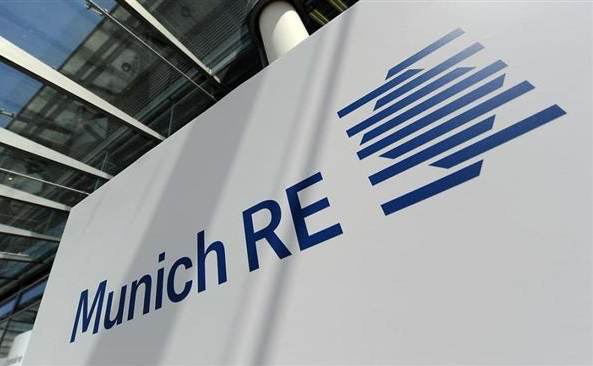Global reinsurance giant Munich Re laid out ambitious plans for continued growth in property and casualty reinsurance, saying that it expects rate hardening will continue for at least a couple of years, “despite alternative capital” which the company clearly sees as a threat to market fundamentals.
 It’s interesting, given the wholesale embrace of alternative capital and insurance-linked securities (ILS) by other major reinsurance firms, that Munich Re continues to position the ILS market as a threat to the fundamentals of reinsurance, rather than a beneficial source of additional, efficient capacity.
It’s interesting, given the wholesale embrace of alternative capital and insurance-linked securities (ILS) by other major reinsurance firms, that Munich Re continues to position the ILS market as a threat to the fundamentals of reinsurance, rather than a beneficial source of additional, efficient capacity.
The reinsurer is targeting a huge 31% of premium growth for its P&C reinsurance business over the next few years, anticipating growing premiums from the forecast EUR 24 billion for 2020, to EUR 31.5 billion by 2025.
Within this targeted growth is expansion into natural catastrophe reinsurance business, but Munich Re at its investor day today will tout the fact it does not rely too much on retrocession, or on third-party capital, instead saying it will grow into property catastrophe risks when the market is hardening, as it sees it to be today.
Conversely, Munich Re said it will reduce its appetite for natural catastrophe risks when the market is softening, which could indicate the company will selectively utilise third-party capital more only at that time.
Munich Re does have core third-party capital relationships, with its collateralised reinsurance sidecar structures (Eden Re) including a direct sidecar relationship (Leo Re) with Dutch pension investor PGGM.
But Munich Re’s investor day will hear of the firms desire to grow based on deploying its own capital, not others, as well as its desire to retain profitable business, which perhaps suggests these sidecar type ILS strategies are not set for significant expansion any time soon.
Which is a very different strategy to fellow reinsurance giant Swiss Re, which has doubled-down on use of third-party capital and ILS management, even launching its own direct ILS fund in recent days.
In addition, Swiss Re uses the catastrophe bond market for a significant chunk of property catastrophe retro, while Munich Re remains a cautious and conservative retro buyer.
While both of these major reinsurance firms are targeting considerable growth over the coming years, it seems they will do so in different manners, particularly when it comes to nat cat risks.
Where they do look more similar though, is in their desires to bend the insurance market supply chain to bring them risks increasingly directly and to originate their own, through use of technology, relationships and their own distribution.
Munich Re’s new strategy features a desire to shape the value chain, creating new business opportunities as it does so.
Part of this, in reinsurance, will be delivered through growth of its Risk Solutions business, which is set to become a key driver of Munich Re’s growth over the coming years and will help to make the firms reinsurance portfolio less cyclical as a whole.
By sourcing more business directly, or through direct relationships, in a more structured manner, Munich Re expects a good deal of its growth not to come through the traditional renewal cycle it seems.
On an average annual basis, Munich Re expects its traditional P&C reinsurance business will grow by 4%, while Risk Solutions will grow at a 10% rate.
On top of this, Munich Re is now targeting a 95% combined ratio across P&C reinsurance through each year to 2025, delivering greater profit to its shareholders through less volatile results, on a growing portfolio of risk.
Munich Re and Swiss Re are now shaping up to give us a wonderful test case in growth into a hard market, including in catastrophe risks, one utilising more and more alternative capital to assist and moderate the impacts of losses (Swiss), the other preferring to grown on the deployment of its own capital, retain more risk and not increase its use of retro either (Munich).
As these companies expand, we could begin to see divergence in how major catastrophe events and annual severe weather impact them, with Swiss Re perhaps able to pass on more of the volatility to its third-party capital partners, while Munich Re retains more of those losses.
Of course, Munich Re could just be being coy and not revealing a planned expansion of third-party capital risk sharing activities. But either way, there’s a clear divergence in strategy emerging here, even if only in how forthcoming they are about the importance of ILS to their businesses in this time of growth opportunity.
 View all of our Artemis Live video interviews and subscribe to our podcast.
View all of our Artemis Live video interviews and subscribe to our podcast.
All of our Artemis Live insurance-linked securities (ILS), catastrophe bonds and reinsurance video content and video interviews can be accessed online.
Our Artemis Live podcast can be subscribed to using the typical podcast services providers, including Apple, Google, Spotify and more.































